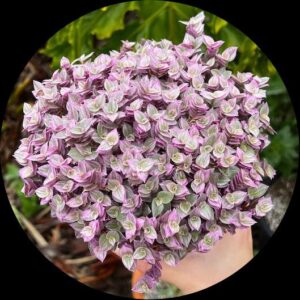- Empty cart.
- Continue Shopping
Ruby Plant (cutting)
Original price was: ₹100.00.₹1.00Current price is: ₹1.00.
Genus : Ruby
“Discover the beauty of Ruby Plant cuttings, a must-have for plant enthusiasts. This houseplant features striking red and green foliage that adds a touch of elegance to any space. With its easy propagation, you can expand your plant collection effortlessly. Simply take a cutting and watch it grow into a new Ruby Plant. Whether you’re a beginner or an experienced gardener, the Ruby Plant is a perfect choice. Bring beauty and convenience into your home with Ruby Plant cuttings. Order now and enjoy the process of growing this stunning houseplant!”
Ruby Plant, also known as Alternanthera dentata ‘Ruby’ or Joseph’s Coat ‘Ruby’, is a popular foliage plant known for its striking and vibrant red-purple leaves. It belongs to the family Amaranthaceae and is native to tropical and subtropical regions of the Americas. Ruby Plant is commonly used as a decorative plant in gardens, landscapes, and as an indoor plant, prized for its colorful foliage and compact growth habit.
Description: Ruby Plant features dense, bushy growth with elliptical leaves that are typically dark red to purple in color, depending on light exposure and maturity. The leaves are medium-sized, measuring approximately 2-4 inches in length, and have a smooth texture. The foliage is the main highlight of this plant, with its intense red-purple coloration providing a bold and eye-catching contrast to other plants or garden elements.
Ruby Plant is a relatively low-growing plant, typically reaching a height of 12-18 inches and spreading up to 18-24 inches wide. It forms a compact mound-like shape, making it suitable for borders, edging, or as a ground cover in gardens. It can also be grown in containers, hanging baskets, or used as an indoor plant to add a pop of color to any space.
Caring for Ruby Plant: Ruby Plant is relatively easy to care for, making it a popular choice for both beginner and experienced gardeners. Here are some care tips for Ruby Plant:
- Light: Ruby Plant prefers bright, indirect light to maintain its vibrant red-purple foliage. It can tolerate partial shade, but the color intensity may diminish. Avoid direct sunlight as it can scorch the leaves.
- Water: Ruby Plant prefers well-draining soil and likes to be kept evenly moist, but not waterlogged. Allow the top inch of soil to dry out between waterings. Overwatering can lead to root rot, so be sure to not let the plant sit in standing water.
- Temperature and Humidity: Ruby Plant thrives in average room temperatures ranging from 65-75°F (18-24°C). It can tolerate higher temperatures, but prolonged exposure to temperatures below 50°F (10°C) can damage the foliage. It prefers moderate to high humidity levels, so misting the leaves or placing a tray of water nearby can help increase humidity.
- Fertilizer: Ruby Plant benefits from regular fertilization during the growing season (spring to fall). Use a balanced, water-soluble fertilizer diluted to half strength, and apply every 2-4 weeks to promote healthy growth and vibrant foliage.
- Pruning: Prune the plant regularly to maintain its compact shape and encourage bushier growth. Pinch back the tips of the stems to promote branching and remove any yellowing or dead leaves.
- Propagation: Ruby Plant can be propagated through stem cuttings. Simply cut a healthy stem below a node, remove the lower leaves, and place it in well-draining soil or water until roots develop.
In conclusion, Ruby Plant is a popular foliage plant known for its vibrant red-purple leaves, compact growth habit, and low maintenance requirements. It is an excellent choice for gardens, landscapes, or as an indoor plant, adding a bold and colorful statement to any space. With proper care, Ruby Plant can thrive and make a stunning addition to your plant collection.














Reviews
There are no reviews yet.